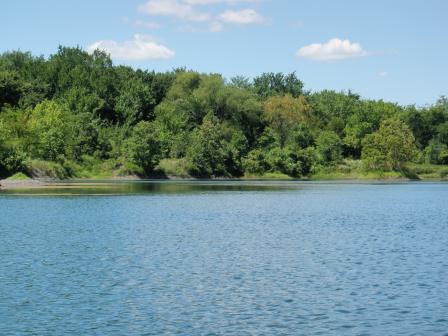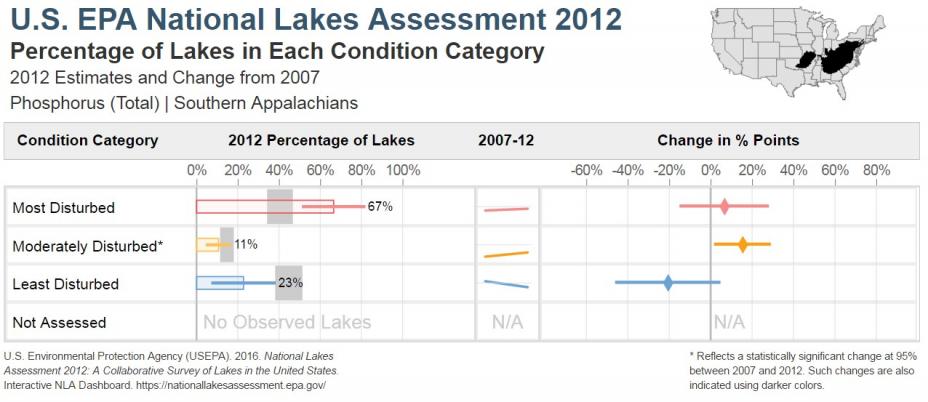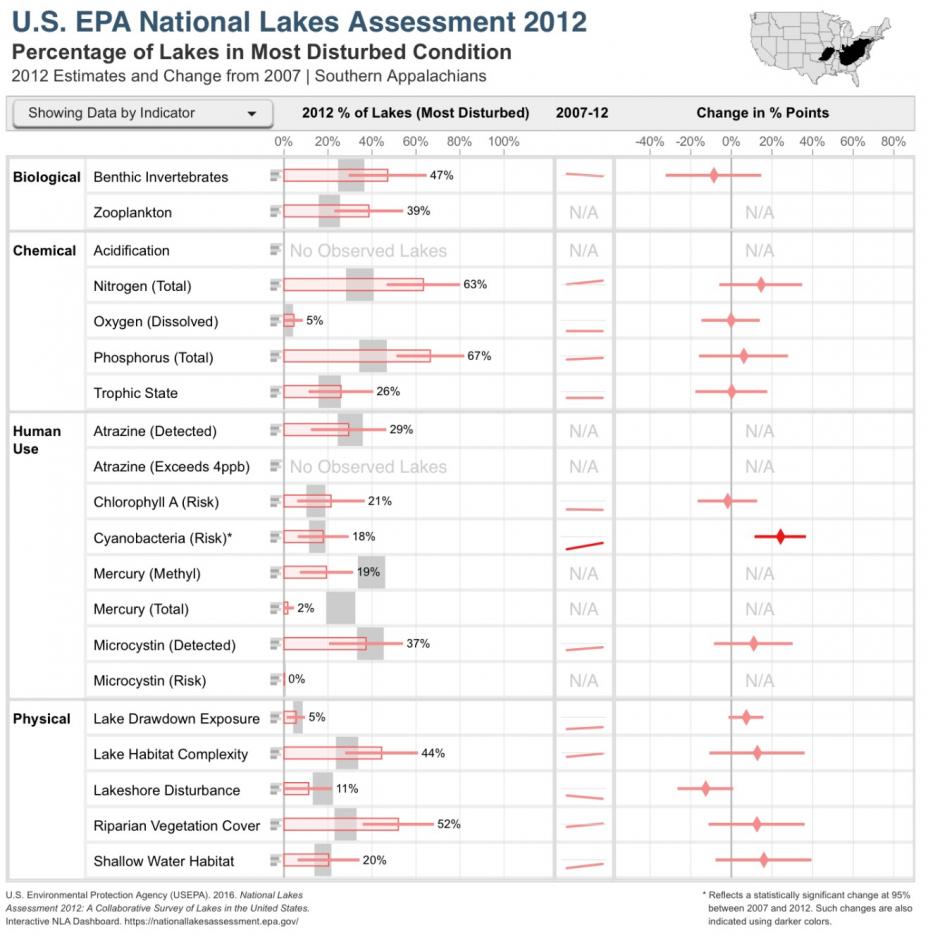Southern Appalachians Ecoregion - NLA 2012 Results
- Overview
- Coastal Plains
- Northern Appalachians
- Northern Plains
- Southern Appalachians
- Southern Plains
- Temperate Plains
- Upper Midwest
- Western Mountains
- Xeric
- NLA Dashboard
A total of 9,139 lakes in the Southern Appalachians ecoregion are represented in the NLA. Of these lakes, less than 1% are natural and over 99% are man-made.
Key Results
Trophic State and Key Stressors: The NLA uses trophic state as an important indicator of lake condition and assesses the extent of key stressors in the nation’s lakes.
- In the Southern Appalachians, 26% of lakes are rated as most disturbed based on trophic state, 46% are eutrophic, 11% are mesotrophic, and 18% are oligotrophic.
- The most widespread stressors assessed are phosphorus (67% of lakes), nitrogen (63%), and riparian vegetation cover (52%).
Human Use Condition: Cyanobacteria is one of three algal toxin related indicators presented in the NLA (see also chlorophyll a and microcystins). It serves as a proxy for the presence of algal toxins.
 Oklahoma lake sampled during the NLA 2012. Photo: Jessie Stine.
Oklahoma lake sampled during the NLA 2012. Photo: Jessie Stine.
- Based on cyanobacteria cell counts, 18% of lakes in the Southern Appalachians are in the most disturbed condition (i.e., pose a high risk of exposure to algal toxins).
Change from 2007 (for lakes >4 hectares)*:
- For the Southern Appalachians, the NLA reports a 24% increase in the proportion of lakes in most disturbed condition between 2007 and 2012 based on the condition of cyanobacteria risk.
To access more indicator graphics please visit the interactive NLA Dashboard.
* The change analysis is based on information from two points in time – 2007 and 2012. The change in condition analysis only considers lakes 4 hectares and larger because smaller lakes were not sampled in 2007.



